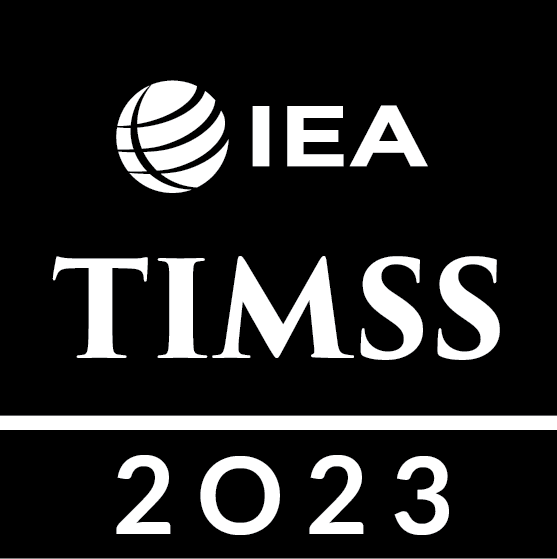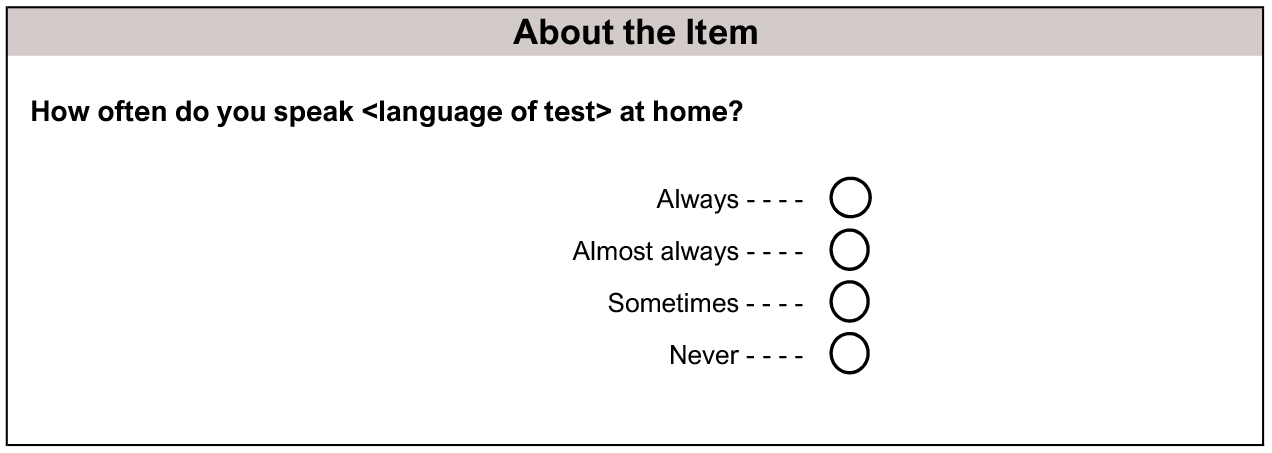Home Environment
Students Speak the Language of the Test at Home
Familiarity with the language of the TIMSS assessment is positively associated with mathematics and science achievement for fourth- and eighth-grade students; however, exclusively speaking this language does not appear to give students an achievement advantage. Across countries, the language in which the TIMSS assessment is administered is expected to be the language in which students receive mathematics and science instruction. Fourth- and eighth-grade students reported their frequency of speaking this language at home, choosing “always,” “almost always,” “sometimes,” or “never”— see Exhibit 3.3.1.
More than half of fourth-grade students internationally reported “always” speaking the language of the test at home (62%) and a small percentage of students reported “never” speaking the language of the test at home (4%). Sixteen percent of students reported “almost always” speaking the language of the test at home, and 18 percent reported “sometimes” speaking the language of the test at home, on average. Internationally in both subjects (Exhibits 3.3.2 and 3.3.3), there was little difference in average achievement for students who reported “always” and “almost always” speaking the language of the test at home (505 vs. 512 in mathematics and 499 vs. 502 in science). Students who reported “sometimes” speaking the language of the test at home had somewhat lower average achievement compared to these groups (496 in mathematics and 483 in science). The small percentage of students who reported that they “never” speak the language of the test at home had the lowest average achievement in both subjects internationally (461 in mathematics and 441 in science).
Two-thirds of eighth-grade students internationally reported that they “always” speak the language of the test at home (67%). Only 4 percent of students reported that they “never” speak the language of the test at home. Sixteen percent reported that they “almost always” speak the language of the test at home and 13 percent reported that they “sometimes” speak the language of the test at home, on average. There is little difference internationally in average achievement in both subjects (Exhibits 3.3.4 and 3.3.5) between students who reported “always” speaking the language of the test at home and “almost always” speaking the language of the test at home. There is an 8-point difference between these groups in average mathematics achievement and a 6-point difference in average science achievement internationally (474 vs. 482 and 476 vs. 482, respectively). The small percentage of students who reported that they “never” speak the language of the test at home had the lowest average achievement in both subjects (430 in mathematics and 413 in science). Internationally, average achievement for students who reported “sometimes” speaking the language of the test at home was in between (454 for mathematics and 443 for science).
Read More
Students Speak the Language of the Test at Home
Higher Socioeconomic Status
Middle Socioeconomic Status
Lower Socioeconomic Status
( ) Standard errors appear in parentheses. Because of rounding some results may appear inconsistent.
A tilde (~) indicates insufficient data to report result.
Scroll Up

